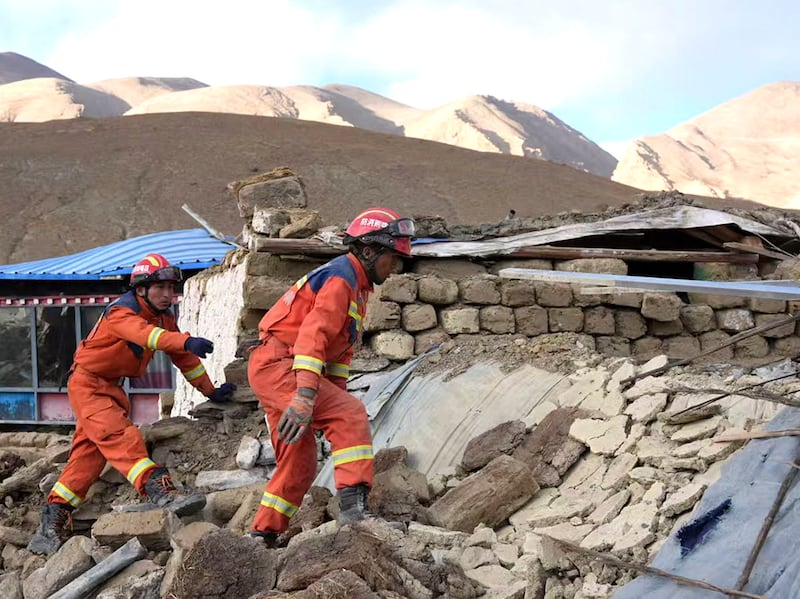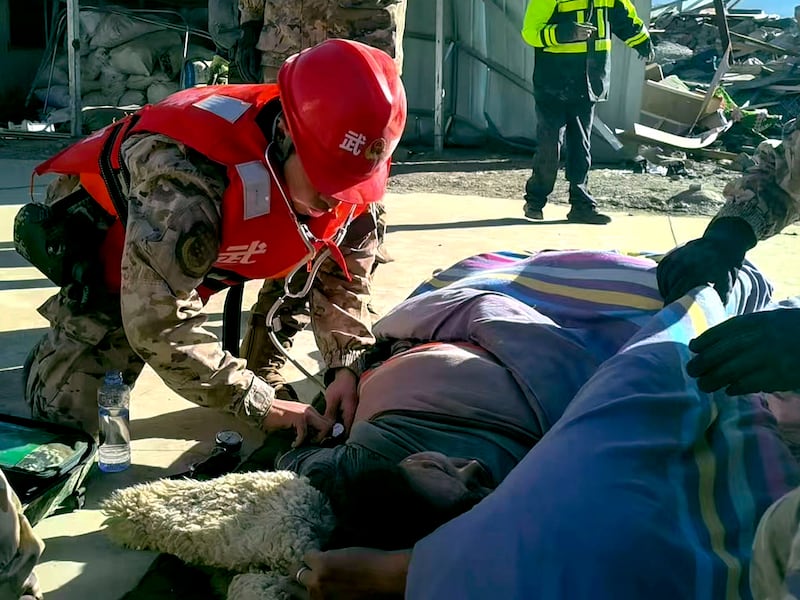UPDATED at 8:11 A.M. ET on 01-13-2025
In the wake of the recent earthquake that hit Dingri county in Tibet, at least 100 people died in one township alone, raising doubts about the death toll of 126 reported by Chinese state media, Tibetan sources said.
Several villages under Dramtso township in Dingri county, called Tingri in Chinese, where the magnitude 7.1 quake struck near the border with Nepal, were among the worst affected, sources told Radio Free Asia. The county is under the administration of the city of Shigatse in the Tibet Autonomous Region.
A Tibetan living in India who was able to contact family members in the township’s Guring village told Radio Free Asia that their community was one of the worst-hit areas. In Guring alone, over 30 people died, Tibetan sources said.
Meanwhile, Chinese authorities on Friday nearly doubled their tally of injured in the earthquake to 337, but said the death toll stood at 126, as per their initial estimate on Tuesday.
But Tibetan sources said they believe the actual number of casualties is much higher than the figure reported by the Chinese government.
But Tibetan sources said they believe the actual number of casualties is much higher than the figure reported by the Chinese government, because the population of Dingri county alone is over 60,000, and Lhatse county, another quake-affected area, has an estimated 50,000 people.

The areas most severely affected by the earthquake were Guring and Zingkar villages in Dramtso township, Kyiding village in Tsogan township, and Chulho township.
Additionally, Ngamring county, Sakya county and Dinggye county were impacted by the temblor.
The earthquake caused extensive structural damage, including to several century-old institutions such as the Dingri Dramtso Serkar, Gonta Phug, Tso-nga, Tso-go and Dewachen monasteries in Dingri’s Chulho area, sources told RFA.
Skepticism
Determining the exact death toll is currently very challenging, said a Tibetan resident of Lhasa, capital of the Tibet Autonomous Region.
“Everybody is skeptical of the official death toll, but we have no way to know the actual figures,” the person said.
RELATED STORIES
Dalai Lama says no reason to be angry at China over Tibet quake
Death toll from Tibet quake rises to 126, expected to climb
7.1-magnitude earthquake strikes Tibet, leaving many dead
Dozens killed as 7.1-magnitude earthquake hits Tibet
Another Tibetan living in India, who remains in contact with people in the affected areas, said residents have been restricted from traveling to neighboring villages following the earthquake.
Despite the restrictions, she was able to contact her family and learned that nine people, including neighbors, had died in their local area.
“China is not allowing Tibetans from nearby areas to travel to affected areas to offer help, fearing details of the earthquake will become widespread,” she said.
Many remote villages in the earthquake-affected areas have yet to receive assistance, and no relief personnel have arrived, Tibetan sources said.
Restrictions on aid
The Chinese government has imposed strict restrictions, preventing people from traveling to affected areas to provide help.

Further measures prohibit individuals from taking pictures or videos, with police deployed to monitor aid workers to ensure compliance.
Tibetans from across the region attempting to assist are being blocked at various checkpoints, with authorities requiring permits for entry.
Additionally, they must hand over to Chinese authorities all aid for distribution, leaving volunteers unable to directly provide support to those in need.
Since Jan. 9, authorities have imposed strict controls at Lhatse county checkpoints, requiring all relief supplies to be handed over to government-designated points, restricting the free distribution of aid by ordinary Tibetans who have been leading aid and donation drives.
RFA received a video from a source inside Tibet that showed mountains of relief and aid materials donated for the Tibet earthquake victims piled up at the government’s local disaster relief management center in Dingri county.
Translated by Tenzin Dickyi and Tenzin Norzom for RFA Tibetan. Edited by Tenxin Pema for RFA Tibetan, and by Roseanne Gerin and Malcolm Foster.
The story was updated to correctly attribute the 30 deaths in Guring village to Tibetan sources, clarify that Tibetan sources reported 100 bodies were found in Dramtso township, and recast the headline.
